The Plextor M8V SATA SSD Review: Toshiba 3D TLC In a Mainstream Drive
by Billy Tallis on March 20, 2018 8:00 AM ESTMixed Random Performance
Our test of mixed random reads and writes covers mixes varying from pure reads to pure writes at 10% increments. Each mix is tested for up to 1 minute or 32GB of data transferred. The test is conducted with a queue depth of 4, and is limited to a 64GB span of the drive. In between each mix, the drive is given idle time of up to one minute so that the overall duty cycle is 50%.
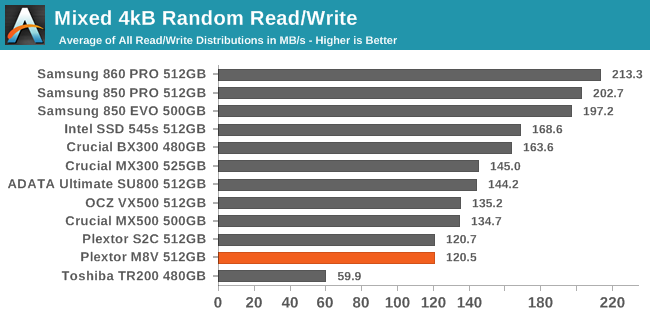
The mixed random I/O performance of the Plextor M8V is decidedly low-end, though still twice as fast as the Toshiba TR200 which is handicapped by a DRAMless controller.

Power efficiency from the Plextor M8V is also poor, but there are a few more drives that core near the M8V on efficiency than there were for performance.
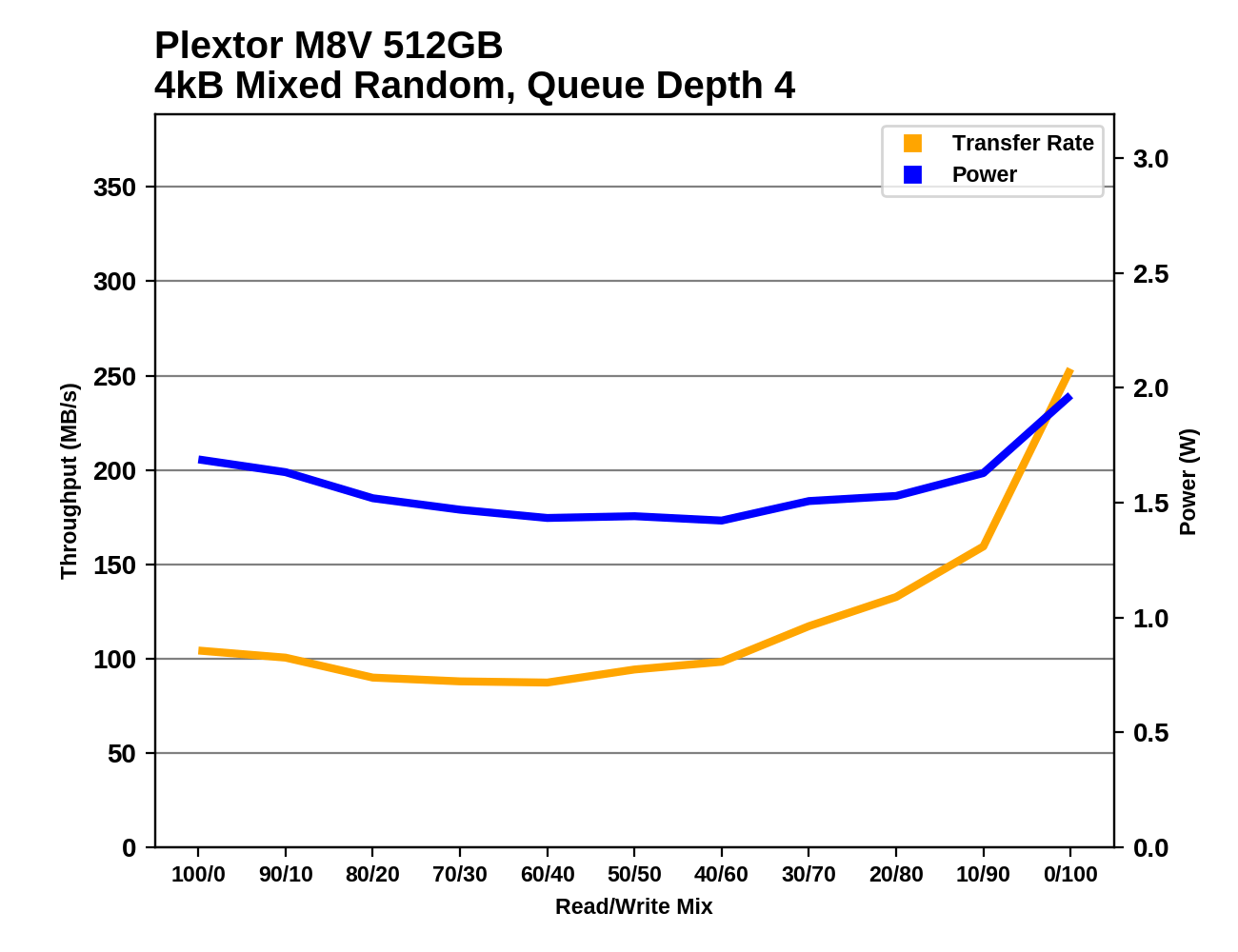 |
|||||||||
The Plextor M8V's performance on the random I/O test dips slightly as writes are added to the mix, and performance is slow to recover. The Crucial MX500 is slightly faster across the board, but its power consumption doesn't have a clear advantage through all phases of this test.
Mixed Sequential Performance
Our test of mixed sequential reads and writes differs from the mixed random I/O test by performing 128kB sequential accesses rather than 4kB accesses at random locations, and the sequential test is conducted at queue depth 1. The range of mixes tested is the same, and the timing and limits on data transfers are also the same as above.
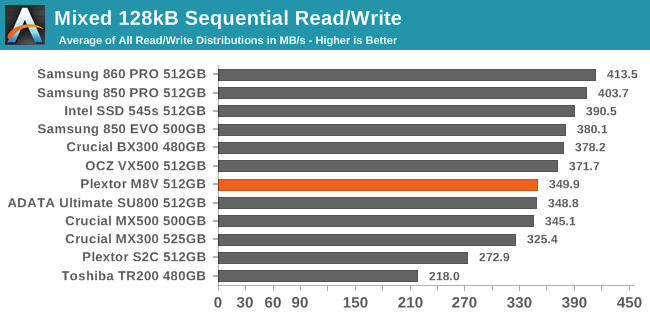
The mixed sequential I/O performance of the Plextor M8V is only slightly below average for mainstream SATA drives, and is about the same performance as the Crucial MX500.
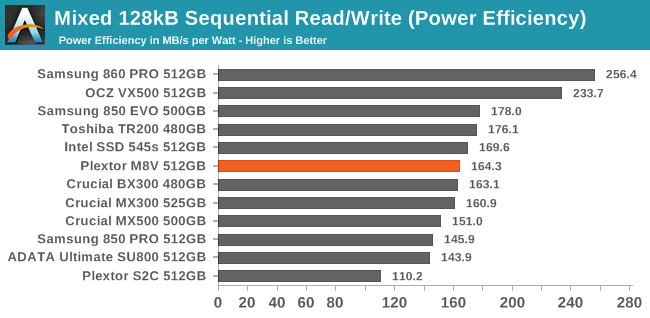
The power efficiency of the M8V during the mixed sequential I/O test was good—only slightly worse than the Intel 545s, though well behind Samsung and the DRAMless SSDs.
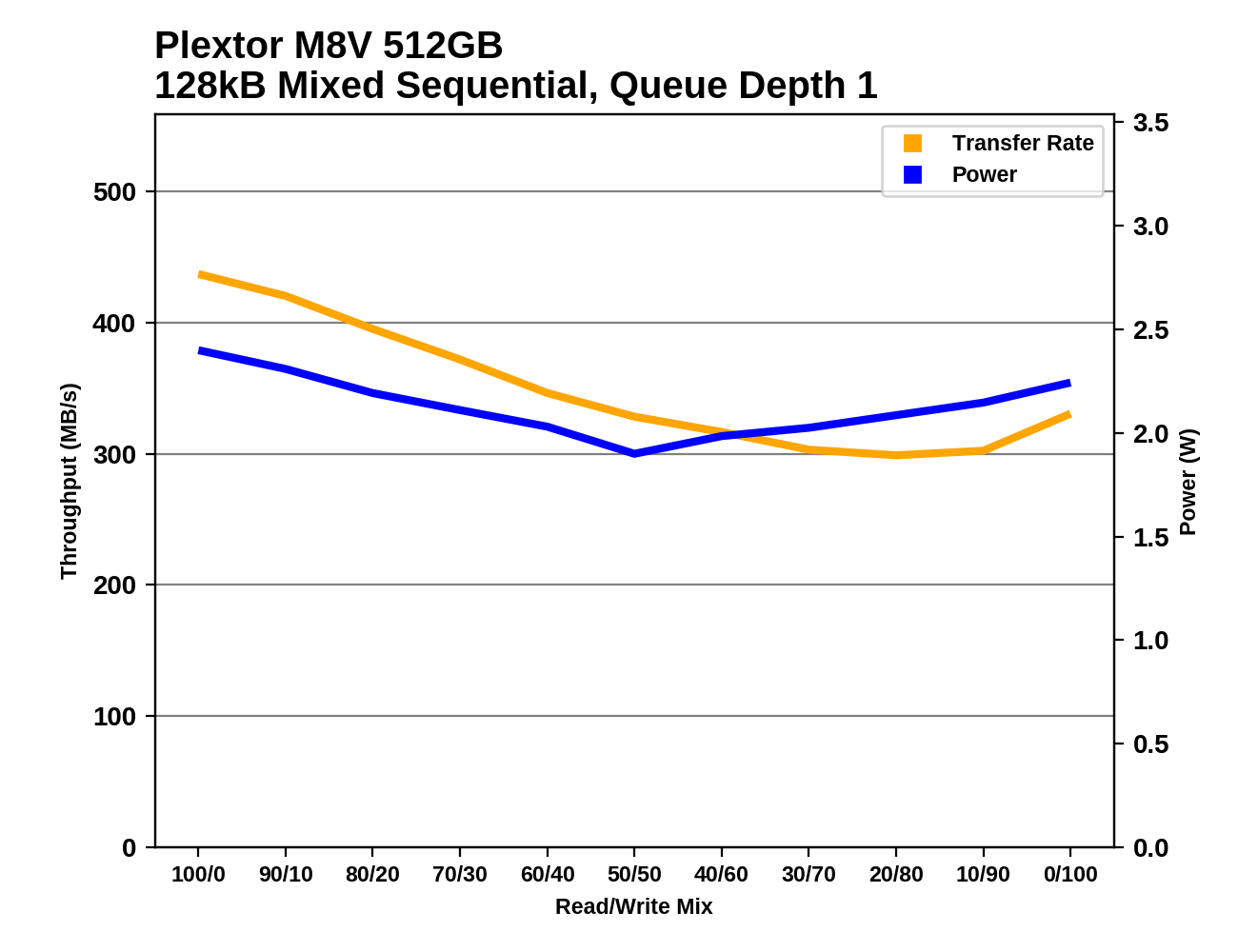 |
|||||||||
The performance of the Plextor M8V decreases steadily through most of the mixed sequential I/O test, reaching a minimum fairly late in the test when the I/O mix is very write-heavy. When the workload finally transitions to pure writes, the speed picks up a bit, but not enough to bring the average back up very far. The power consumption bottoms out with a 50/50 read/write mix.
The scaling behavior of the M8V most closely resembles Samsung's SATA drives, but they tend to retain more of their performance during the first half of the test, and recover more performance after hitting their low in the second half.










8 Comments
View All Comments
edgineer - Tuesday, March 20, 2018 - link
What's the actual capacity of this drive, 476 GiB? I hate having to use a calculator/guessing.Billy Tallis - Tuesday, March 20, 2018 - link
As with any other 512GB drive, the usable capacity (before partitioning) is 512,110,190,592 bytes.Dragonstongue - Tuesday, March 20, 2018 - link
Crucial MX200 500GB ends up as 465gb usable Win 7 64 build after formatted for useCrucial MX100 256 ends up with 238GB usable
frenchy_2001 - Tuesday, March 20, 2018 - link
That would be because Windows displays GiB (2^30 bytes) and not GB (10^9 Bytes).https://en.wikipedia.org/wiki/Gibibyte
bug77 - Thursday, March 22, 2018 - link
During formatting, some space is reserved for the file system. That is not a limitation of the drive, nor does it make the drive have a smaller capacity.You don't like file system's overhead? Use a different file system. Oh wait, you can't do that on Windows :D
Holliday75 - Wednesday, March 21, 2018 - link
These new bots are everywhere. Been seeing them all over Facebook posting on a few of my favorite professional sports teams pages.FunBunny2 - Thursday, March 22, 2018 - link
but, but, but... Mark just promised that they've been driving the culture at Facebook for years, years I say, to improve user experience. don't you believe him?????leexgx - Sunday, March 25, 2018 - link
can you please fix on mobile view in "Print this article" the "Thanks to" box overrides page width limits so when scrolling up and down it sometimes go left and right